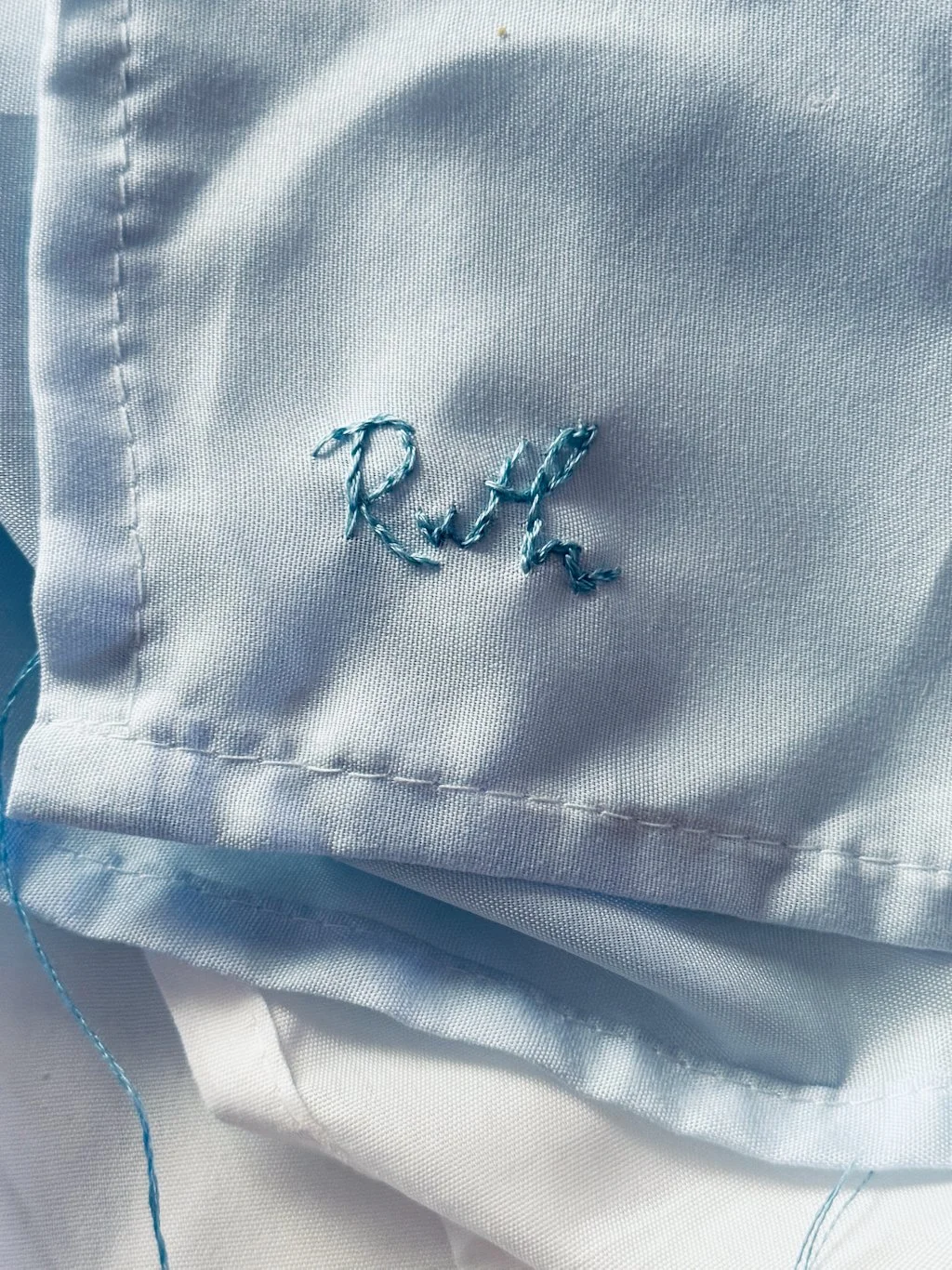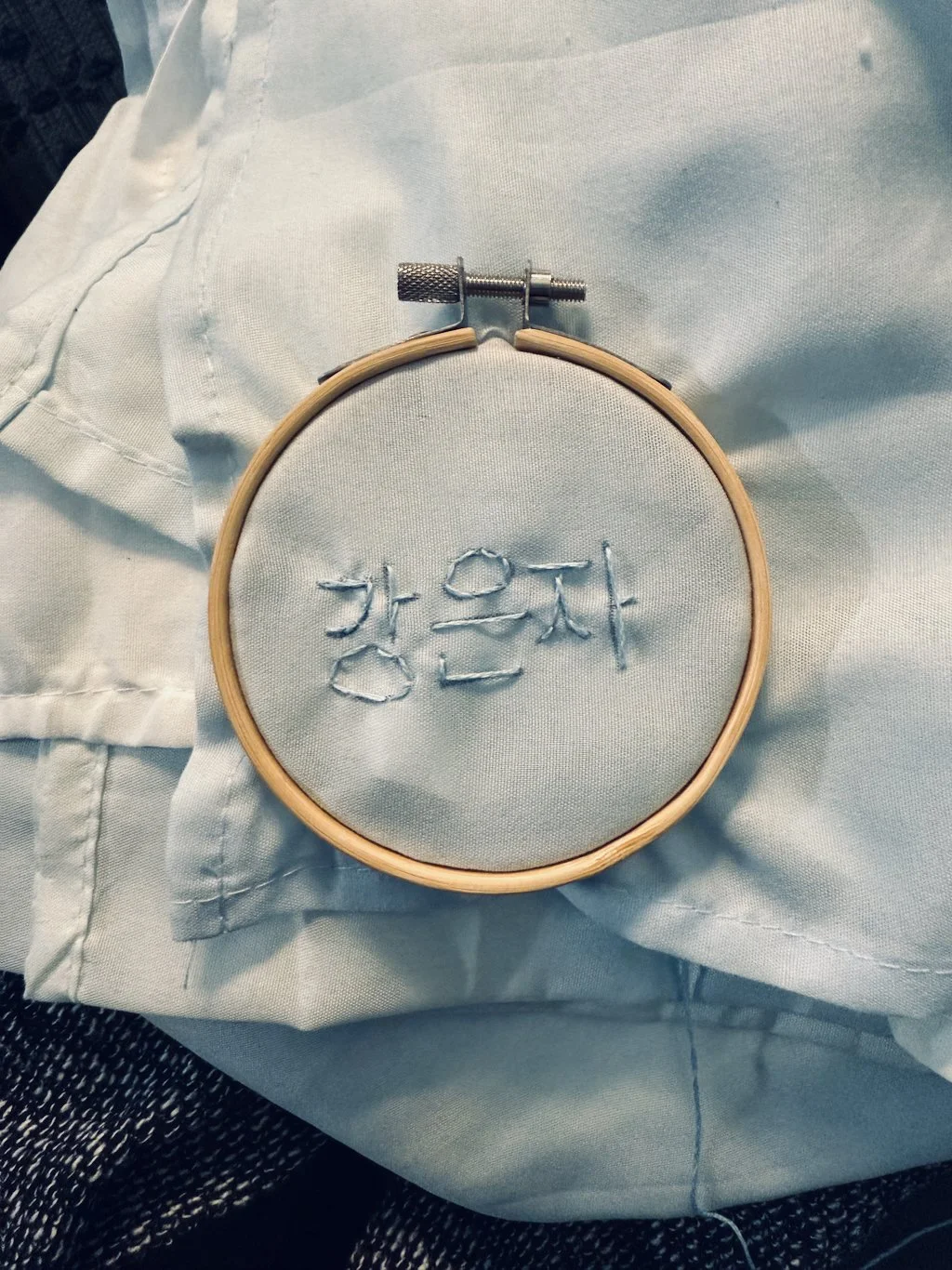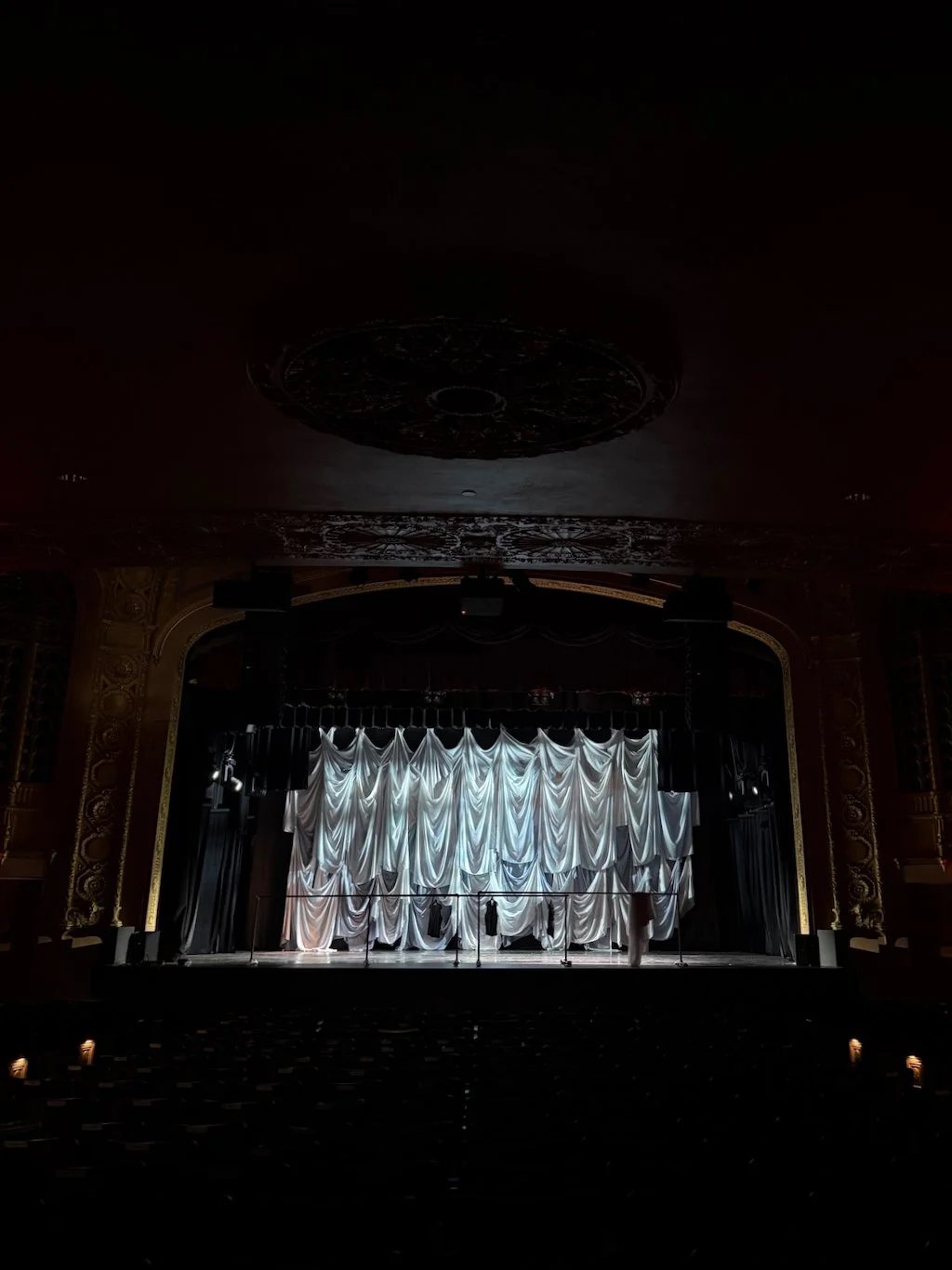THE THREADS WE BARE, Set design and installation for Ballet Des Moines, Hoyt Sherman Place, 2025
The Threads We Bare was created for Eric Trope’s world premiere Memory Sonata, set to the music of Cécile Chaminade. Unlike many women of her time, Chaminade had the freedom to pursue her artistic ambitions to her fullest extent. In contrast, most women labored within the home, their brilliance bound to domestic work.
A series of hand-dyed twin bedsheets hang in quiet suspension. They reference the daily, unrelenting tasks of an earlier era — work that defined the lives of so many women in our lineage. The twin sheet itself becomes a symbol: of singleness or separation, of being alone or independent, or even of a marriage of convenience, as was the case of Chaminade.
Each sheet bears names hand sewn into their corners. Names of grandmothers, mothers, and matriarchs connected to Ballet Des Moines’ dancers, staff, board members, and community. Together, these sheets form a collective portrait of endurance and care, tethering private histories to shared memory.
The Threads We Bare is both an offering and a remembrance: a recognition of those that came before us to set the stage for us to flourish.
EN POINTE EN MASSE, Mainframe Studios for Ballet Des Moines, August 2025
En pointe en masse presents 84 pairs of pointe shoes, less than half the number required during a season by Ballet Des Moines dancers, arranged to reveal the life cycle of a dancer’s journey. From the pristine satin of a student’s first pair to the battered remains of a professional’s "dead" shoes, each pair tells a story of discipline and transformation. Together, they reflect the dual nature of ballet: the elegance and poise that meet relentless training, raw athleticism, and unwavering precision.
Thank you to those individuals and dance studios that contributed to the installation, including dancers from Ballet Des Moines, Des Moines DanzArts Studio, Elite Dance Outfitters, and Robert Thomas Dancenter.
meuse, Mainframe Studios, 2024
"When an animal, a rabbit, say, beds down in a protecting fencerow, the weight and warmth of his curled body leaves a mirroring mark upon the ground. The grasses often appear to have been woven into a birdlike nest, as he turned in a circle before subsiding into rest. This soft bowl in the grasses, this body-formed evidence of hare, has a name, an obsolete but beautiful word: meuse. (Enticingly close to Muse, daughter of Memory, and source of inspiration.) Each of us leaves evidence on the earth that in various ways bears our form." - From Sally Mann’s Hold Still
The work included within the preview collection of meuse embodies the concepts of time, motherhood, dormancy and healing, organized chaos and the creation of protective circles.
feeding ourselves the wrong memories for survival, Simpson College Gallery of Art and Design, 2024
784 porcelain peanuts weighing approximately 10.5 pounds
Dimensions vary by installation with each porcelain peanut measuring roughly 1” in length and ½” in diameter.
There’s always something in our pockets. Something to remember something by. Something to cling to. When I first came across the idea of a peanut, I was in awe of how perfectly it fit cradled in between my fingers and my thumb. Just like the tiny keepsakes I’d give to my children on uncertain school days, these petite porcelain peanuts served as mementos to help us survive one moment to the next.
When I thought about peanuts holding memory, I quickly made the connection to that of the elephant based on two preconceived notions: elephants eat peanuts and elephants never forget. Known to have the largest brain of all land mammals, weighing in at approximately 10.5 pounds, elephant herds have a matriarchal structure with one older female in charge. The wealth of experience of the matriarch is believed to be due to her photographic memory and the ability to retain these memories for several decades, passing them down through future generations of female leaders, ensuring memory as a means of future familial survival.
But then my research took a turn when I came to learn that elephants don’t eat peanuts. Peanuts don’t grow in the wild. The visual of elephants eating peanuts only exists due to an early marketing ploy to ensure circus goers felt a sense of safety under the red tent next to these shackled giants. Even in captivity, an elephant's diet doesn’t actually consist of peanuts.
In feeding ourselves the wrong memories for survival, I explore the idea of examining what memories we’re holding onto, determining whether they’re aiding in our forward movement and familial survival or instead, further confining us in our own cycles of emotional captivity.
A DROUGHT OF HOPE. A FLOOD OF DEATH, Viaduct Gallery, October 2015.
“The UpsideUp, a collaborative origami collective from Des Moines, Iowa, has defined the fold in two ways, creating pristine white boats representative of those used in refugee situations along with the crumpled up pages of the New York Times, establishing the fleeting nature of what is deemed newsworthy. Eight hundred pages of crumpled newsprint meant to represent the 800 Syrian refugees lives lost.”
The answer comes when we consider what pressure is. Viaduct Gallery, March 2017. Read more about the installation here.
Give me your heart and I'll love you till Tuesday. 60"H x 45"W x 2. Private commission, 2017.
Carrousel. 53"H x 103"W. Private commission, 2017.
Skateboard bench top and bottom design. Prototype for Lauridsen Skatepark. Commissioned by Des Moines Partnership, 2018.
Des Moines City Sounds 2016 Artist


































